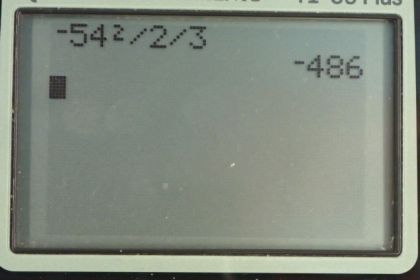Note: The calculator screenshot shows the acceleration is negative, but I should have surrounded the in brackets, in which case squaring it would have made it positive. We know the acceleration should be positive since it's reducing a downward velocity. It's in the opposite direction to the downward velocity, and therefore is directed up. Upward was defined, as usual, to be positive, which makes the acceleration positive.
Solution video
OpenStax College Physics, Chapter 2, Problem 34 (Problems & Exercises)

Calculator Screenshots
Comments
The answer is wrong, its a negative.
Hello, thank you for the comment. The calculator screenshot shows a negative answer, but the mistake is in the screenshot. I should have surrounded the in brackets, in which case squaring it would have made a positive. The acceleration has to be positive since it's directed upward, and upward was defined (as usual) to be positive. We know the acceleration is positive since it reduces downward velocity. It's in the opposite direction to the downward velocity, in other words.
why we are not putting the intital distace 6000m intead of putting 3m ?
Hello, thank you for the question. This question asks us to calculate the deceleration of the airmen. The deceleration occurs over a distance of 3m. Only the initial and finals velocities, and distance over which this change in velocity occurs, is important to calculate deceleration. The 6000m figure given is the distance over which they accelerated and then traveled at terminal velocity before impacting the trees/snow/ground.
Hope this helps,
Shaun
Hello, I thought when we consider deceleration the answer would always be negative.


